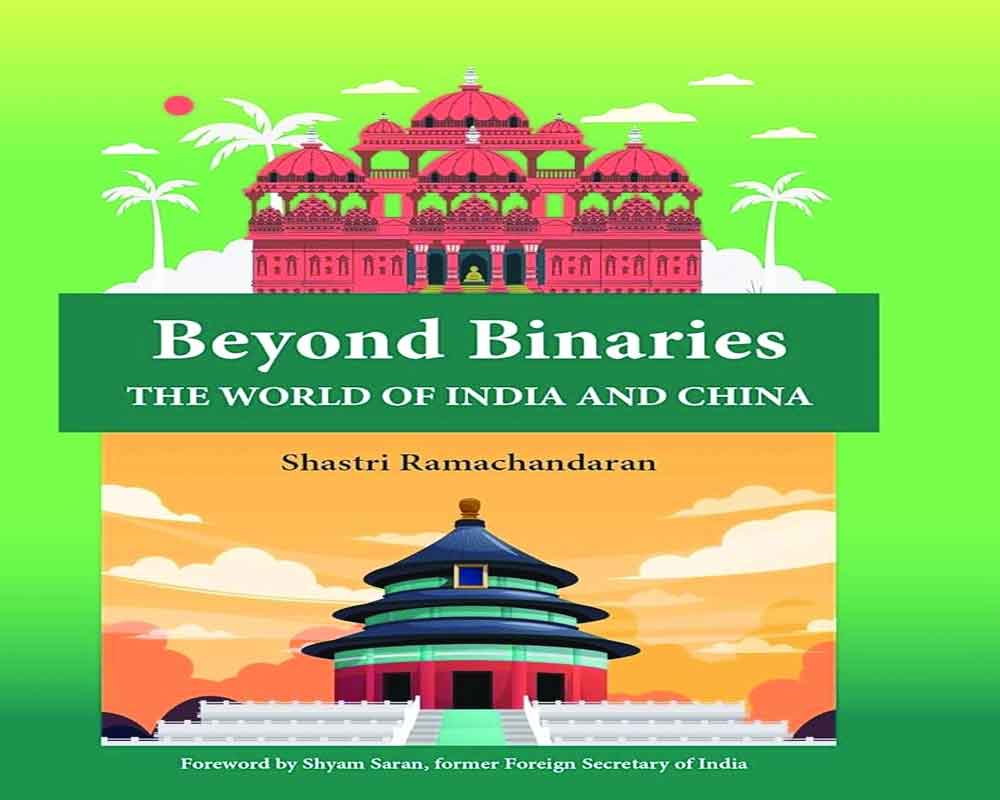Book Name: Beyond Binaries - The World of India and China
Author: Shastri Ramachandaran
Publishers: Genuine Publications and Media Pvt Ltd
Price: Rs 450
Ramachandaran looks past the current stalemate in relations to suggest that the “two tigers” on “one mountain” (meaning Asia) should try to get along via better economic relations, says Satarupa Bhattacharjya
Shastri Ramachandaran’s Beyond Binaries - The World of India and China is a broad brushstroke of topics, from Chinese domestic events such as the fall of the former Communist Party official Bo Xilai, the earlier one-child policy and traditional Chinese medicine to the Indian government’s handling of a visa application of a Uyghur activist wanted in China.
The book is an ambitious attempt for the long period it covers. The Indian journalist offers snapshots of major goings-on in one of the world’s most complex bilateral relationships over 2008-22 and seeks to shed light on decision-making within the Indian establishment, especially of the past.
Sino-Indian relations worsened after clashes in the Galwan River valley killed soldiers from both sides in 2020, disturbing the border peace managed since the 1962 war, barring an incident of bloodshed in 1975.
The book’s strength lies in its title.
It is often through a binary lens of right and wrong or rich and poor that at least a section of the population in India and China seems to form an understanding of each other’s country. At times, some media-promoted and thinktank-assisted views influence the international understanding of the India-China relationship.
Written in an easy-to-read manner the nearly 300-page book includes Ramachandaran’s articles and places the material on India-China relations in a chronological order. It adds to the limited number of nonfiction books related to China published by Indians who have lived and worked there over different durations.
“India has the advantage of being able to choose what is appropriate from the Chinese experience. China has much to profit from partnering with India. It would be serving it own interest by exporting infrastructure projects, setting up manufacturing units and finding a new market of over 1 billion for its companies, projects, products and services. The outcome, to use a phrase the Chinese love, would be a ‘win-win’ for both,” Ramachandaran writes.
But in the absence of political thrust between the two countries, the mutual “win-win” that the author proposes sounds unrealistic.
Ramachandaran looks past the current stalemate in relations to suggest that the “two tigers” on “one mountain” (meaning Asia) should try to get along via better economic relations.
“China has no option, in the prevalent international climate, but to come to terms with India and create conditions for the two countries to pursue reconciliation in their mutual interest. India, for its part, should deal with China in ways that are more effective. One tried and tested approach that may succeed is for India to deal with China exactly as the US does, and not as Washington advises, wants or pushes New Delhi to do.
“The business of China, like that of America, is business.”
India’s trade deficit with China was $83.2 billion last year, underscoring the asymmetry of the economic relationship.
The author does not downplay the China challenge India faces in its own backyard. He presents a string of major news developments in South Asia in the recent years to highlight the intense competition for influence.
The book’s most interesting sections are perhaps on the functioning of the Chinese media. The vast majority of media on the mainland are either controlled or funded by the party-state in China. So, what’s it like “to be an expatriate journalist in China”, Ramachandaran himself asks. His answer is derived from his own experience, having done stints at English-language Chinese media outlets.
His impressions of city life in Beijing and Shanghai - the glitzy malls with “a dazzling explosion of brands” -- lend a soft touch to the bevy of serious issues being discussed. Then there is a travelogue-like description of Tibet’s natural beauty and monastic architecture.
The book’s theme “binaries” could have been explored further.
The reviewer is an Indian journalist, with a decadelong China experience.


























